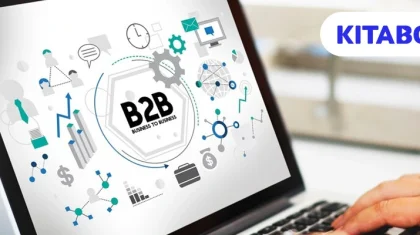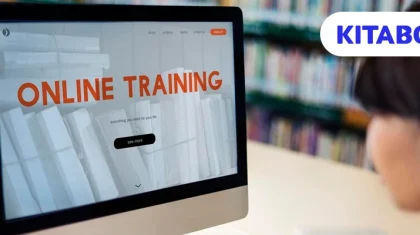
Interactive eLearning: Revolutionize Your Learning Experience
K12 education has witnessed a dramatic transformation with the advent of interactive eLearning. This approach to learning provides students with an engaging and dynamic learning experience, consciously designed according to their individual needs and preferences.
Interactive learning combines the power of technology with modern pedagogical principles to create an immersive learning environment that encourages active participation and collaboration while simultaneously improving knowledge retention.
In this blog, we will explore the various facets of interactive eLearning and how it can be implemented for an in-depth learning experience.
Table of Contents:
I. Understanding Interactive eLearning
II. The Benefits of Interactive eLearning
- Flexibility and Convenience
- Improved Knowledge Retention
- Better Understanding of Learning Material
- Greater Content Scalability and Reach
- Personalized Learning
III. The Best Practices for Implementing Interactive eLearning
- Align Learning Objectives and Content
- Develop a Supportive Learning Environment
- Design Engaging Interactive Activities
- Provide Ongoing Feedback
- Encourage Active Participation
- Continuous Improvement and Evaluation
- Promote Accessibility
IV. Conclusion
Understanding Interactive eLearning
Interactive eLearning implements a range of digital learning approaches that actively engage K12 students in the educational experience. Unlike traditional teaching methods that mainly focus on the passive consumption of information, interactive learning encourages students to interact with their course materials, instructors, and fellow students in meaningful ways.
Multimedia elements such as videos, simulations, quizzes, and games, as well as interactive features like discussion forums and virtual labs, make this educational philosophy more dynamic.
Interactive elements allow educators to refine their content for different learning styles and preferences. Visual students benefit immensely from multimedia content and infographics, while auditory students might learn better by absorbing podcasts and audio lectures. Students can engage in hands-on activities and simulations and thrive in collaborative environments.
By offering a variety of interactive elements, eLearning platforms can accommodate the diverse needs of students and enhance the overall learning experience for a wider demographic.
The Benefits of Interactive eLearning
The implementation of interactivity in online K12 learning offers several benefits that allow educators to make the most of their teaching environments.
Let’s take a look at the benefits it provides:
Flexibility and Convenience
Interactive eLearning gives students the flexibility to access course materials at their convenience from any location. Asynchronous learning models allow students to progress through the content at their own pace, making space to accommodate different schedules and learning styles.
This way, students can tailor their learning experiences to suit their unique circumstances.
Improved Knowledge Retention
Better Understanding of Learning Material
Interactivity enables students to apply their newly acquired knowledge in practical contexts to develop a deeper understanding of the subject matter. Active participation via interactive activities promotes critical thinking and problem-solving skills.
Digital textbook platforms such as KITABOO enable the integration of interactive elements into educational textbooks, helping students develop a more nuanced understanding. This way, the platform supports a more dynamic and engaging learning experience in the long run.
Greater Content Scalability and Reach
Educators can reach a broader audience with interactive eLearning initiatives, as the online delivery of educational content allows for scalability. Educators can teach a larger number of students without the restrictions of physical classrooms.
Personalized Learning
Interactive platforms can adapt content to cater to individual learning needs and offer personalized learning experiences. Students have the flexibility to explore topics at their own pace and focus on areas where they require additional help.
Digital textbook platforms such as KITABOO offer advanced performance metrics that give educators insightful data on student performance, engagement, and learning dynamics. With these insights, educators can further personalize their content for an optimized learning experience.
The Best Practices for Implementing Interactive eLearning
Below are the best practices for implementing interactive eLearning to ensure a successful and engaging learning experience:
Align Learning Objectives and Content
Define learning objectives and outcomes to guide the development of your interactive learning content. Ensure the course materials are engaging and aligned with instructional goals to maximize student learning outcomes.
Develop a Supportive Learning Environment
Be open to opportunities to include collaboration, communication, and peer interaction. Encourage a sense of community among students through discussion forums, group projects, and virtual study groups.
Design Engaging Interactive Activities
Design interactive activities that cater to diverse learning styles and preferences. Use multimedia elements and gamification techniques to create engaging and interactive learning experiences. Rich storytelling and real-world examples help make concepts more relatable and memorable for students.
Provide Ongoing Feedback
Offer opportunities for personalized support and guidance for students throughout the interactive course. Provide actionable feedback on assignments to help students track their progress and identify deficiencies.
Encourage Active Participation
Design interactive activities that encourage active participation and engagement among students. Incorporate multimedia elements, simulations, and gamification techniques to retain learner interest.
Continuous Improvement and Evaluation
Regularly review and evaluate the effectiveness of your interactive eLearning initiatives. Gather feedback from students and other educators to identify areas for improvement.
Promote Accessibility
Ensure the interactive learning course is designed to be accessible to students with disabilities and diverse learning needs. Do this by incorporating features that accommodate different learning styles, preferences, and abilities.
Additionally, user-friendly navigation, clear instructions, timely technical support, responsive design, and a balanced workload contribute to a seamless learning experience. Make sure to prioritize a user-centric approach, with ease of navigation as the cornerstone. This will help you ensure that students can intuitively progress through the interactive modules without unnecessary obstacles.
Conclusion
Interactive eLearning is steadily revolutionizing the way we learn and teach, offering a dynamic and engaging K12 educational experience that caters to the diverse needs and preferences of students. This eLearning method creates immersive learning environments that promote active participation, collaboration, and knowledge retention.
Digital textbook platforms such as KITABOO provide educators with the resources and tools needed to create interactive, engaging, and multi-faceted K12 learning materials. Such platforms provide publishers and content creators a seamless interface.
Partner with us to begin a revolutionary educational journey, where we help you embrace the transformative power of interactive eLearning.
Have queries? Connect with our expert team today!
Discover how a mobile-first training platform can help your organization.
Kitaboo is a cloud-based platform to create, deliver & track mobile-first interactive training content.



